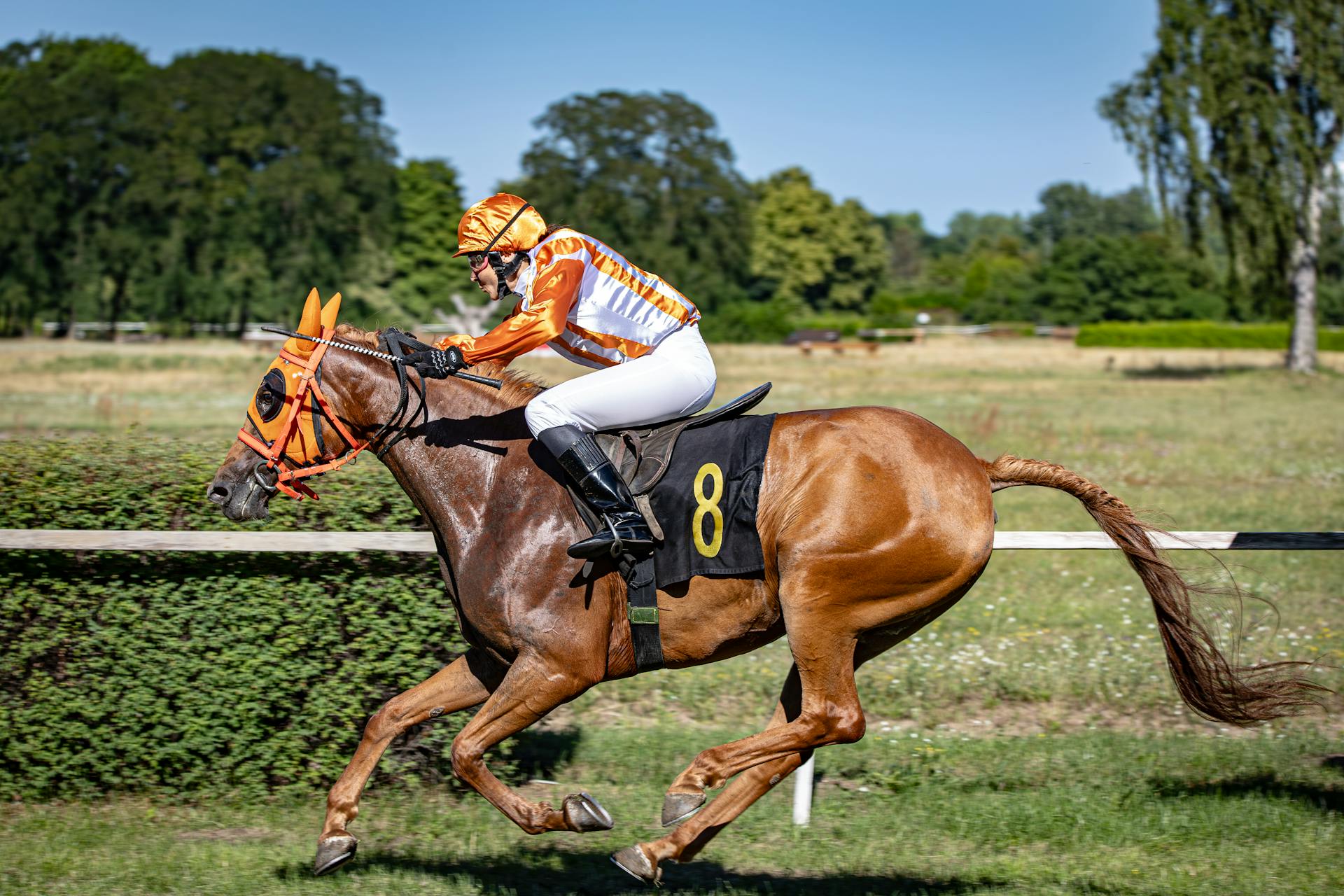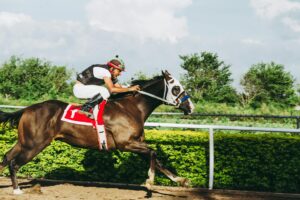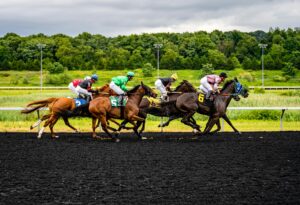Introduction to Horse Speed Records
The world of equestrian sports and racing is undeniably fascinating, with one of the most intriguing aspects being the speed that horses can achieve. A ‘fast’ horse is generally defined as one that can reach high velocities over a specific distance, demonstrating remarkable power, agility, and endurance. Horse speed records are not merely numerical achievements; they represent the pinnacle of equine athleticism and the culmination of years of breeding, training, and skill. Understanding what qualifies as fast in the context of various horse breeds and disciplines is essential for both enthusiasts and professionals alike.
Speed in horse racing is quantified using units such as miles per hour (MPH) or furlongs per second, depending on the race’s distance and format. The most famous race distances, such as the Kentucky Derby or the Belmont Stakes, provide a well-established framework for evaluating speed records. Measurements are typically taken during competitive races, where horses are timed from start to finish, allowing for direct comparisons between performances. Additionally, timing variations, such as the use of photo finish technology, help ensure accuracy in recording these remarkable feats.
Historically, horse racing dates back thousands of years, with ancient civilizations employing horses in competitive racing as a means of showcasing their speed and stamina. Over the centuries, this practice has evolved, leading to the establishment of various racing formats, events, and governance bodies. The pursuit of speed has driven enthusiasts to refine breeding practices and training methods, resulting in extraordinary equine athletes that can distinguish themselves on the racetrack. This blog post will delve deeper into the remarkable world of fastest horses, exploring records, notable races, and the figures that have shaped this captivating domain of horse racing.
The Anatomy of a Fast Horse
To understand the remarkable speed of racehorses, one must examine the anatomical features that contribute to their peak performance. Several physical traits, including muscle composition, bone structure, and cardiovascular efficiency, collectively play a vital role in a horse’s ability to run swiftly.
First, muscle composition is fundamental. Fast horses predominantly possess a higher proportion of fast-twitch muscle fibers, which are designed for explosive power and rapid acceleration. These fibers enable horses to achieve high speeds quickly, making them capable of outpacing their competitors in short distances. The arrangement and proportion of muscle fibers are often influenced by genetics, which can determine a horse’s innate speed potential.
Secondly, bone structure is critically important. A well-structured skeletal system enables horses to bear the physical strain of high-speed gallops while maintaining balance and agility. The length and density of a horse’s legs, particularly, contribute to stride length and frequency. Longer limbs allow for greater forward propulsion with each step, while robust bones support the necessary weight and stress without injury. This combination results in an efficient running style that can maximize speed.
Additionally, cardiovascular capabilities cannot be overlooked. A horse with a strong heart and lungs can sustain high speeds for longer durations. The ability to process oxygen efficiently feeds the muscles, allowing them to perform at their best. Training plays an essential role in enhancing these cardiovascular features, as racehorses typically undergo rigorous conditioning to improve both their endurance and speed.
In conclusion, the anatomy of a fast horse encompasses a blend of advanced muscle composition, optimized bone structure, and superior cardiovascular efficiency. Each of these elements is integral to achieving the remarkable speed that defines elite racehorses, demonstrating that successful equine performance is as much a product of biology as it is of training and care.
Records by Breed: Thoroughbreds vs. Quarter Horses
The world of horse racing is primarily dominated by two breeds renowned for their speed: Thoroughbreds and Quarter Horses. Each breed has unique characteristics that contribute to their racing capabilities, and both have made significant marks in equine speed records. Understanding the differences in their records allows us to appreciate the nuances of each breed’s performance.
Thoroughbreds, known for their exceptional stamina and agility, typically excel in longer races. They have held the title for the fastest times in distances ranging from one mile to one and a half miles. The legendary Secretariat, a Thoroughbred, recorded a remarkable time of 1:59.4 minutes for the Kentucky Derby in 1973, a record that remains unbroken. This breed’s tall, slim build and powerful stride allow them to cover substantial ground quickly, making them a dominant force in classic races.
In contrast, Quarter Horses are built for explosiveness and speed over shorter distances, often competing in sprints of a quarter mile or less. They are known to be the fastest horses over short bursts, with records showing that they can reach speeds up to 55 miles per hour. The titleholder for the quickest quarter-mile run is a Quarter Horse named “Olenas Bad Boy,” who achieved this feat in just 21.3 seconds. Their compact physique and muscle composition enable them to accelerate rapidly, making them formidable competitors in both rodeo and racing events.
While both breeds are exceptional in their own right, the distinctions in their race types and speed records highlight the specialized nature of each breed’s capabilities. Thoroughbreds tend to dominate longer races due to their endurance, while Quarter Horses excel in short-distance sprints, showcasing the variety and versatility in equine racing. Understanding these records not only enriches our knowledge of horse racing but also reflects the diverse breeding practices that have shaped these majestic animals over the years.
Legendary Fast Horses: Case Studies
Throughout the history of horse racing, numerous equine athletes have distinguished themselves by setting remarkable speed records and captivating the public’s imagination. Among these legendary horses, two notable champions stand out: Secretariat and Man o’ War.
Secretariat, an American Thoroughbred racehorse, achieved iconic status following his phenomenal performance in the 1973 Triple Crown. Most significantly, he won the Belmont Stakes by an astounding 31 lengths, finishing the 1.5-mile race in a world record time of 2 minutes and 24 seconds. This record for the Belmont Stakes remains unbroken, solidifying Secretariat’s legacy as one of the fastest horses in history. Additionally, his Triple Crown victory was marked by exceptional speed in the Kentucky Derby and Preakness Stakes, further emphasizing his ability to excel across various distances. Beyond his racing achievements, Secretariat’s influence on the popularity of the sport is unparalleled, bringing unprecedented attention to horse racing during his reign.
Man o’ War, another remarkable Thoroughbred, dominated the racing scene in the early 20th century. With a racing career from 1919 to 1920, he secured 20 victories out of 21 races, which included prominent wins in the Preakness Stakes and the Belmont Stakes. Man o’ War’s most notable achievement was his win in the 1920 Belmont Stakes, where he covered the 1.5-mile distance in a time of 2 minutes and 14 seconds, a record that stood for nearly 30 years. His exceptional speed and powerful strides not only set records but also inspired a generation of breeders and trainers to demand more from their equine athletes.
Both Secretariat and Man o’ War epitomize the remarkable heritage of speed within horse racing. Their achievements continue to resonate within the sport, inspiring future generations while reaffirming the significance of equine speed records in the annals of racing history.
Modern Innovations in Speed Measurement
In recent years, the advancement of technology has revolutionized how we measure equine speed, providing precise data that was previously unattainable. Modern innovations, such as Global Positioning System (GPS) tracking and sophisticated motion sensors, have become integral tools in the world of horse racing and training. These technologies grant trainers, jockeys, and veterinarians insights into a horse’s performance metrics that help optimize training regimens and enhance competitive tactics.
GPS tracking systems, for example, allow for real-time data collection, enabling the monitoring of a horse’s speed over various distances. This form of technology works by attaching GPS devices to a horse during training or races, capturing data points that reveal speed fluctuations, acceleration, and heart rate. The analysis of this data helps not only in assessing a horse’s physical capability but also in showcasing its race tendencies and pacing strategies. As a result, trainers and owners can make informed decisions about race entry and conditioning plans, maximizing the potential of each equine athlete.
Moreover, motion sensors have emerged as another vital tool in measuring speed. These sensors, often embedded in specially designed saddles or gear, track movement patterns that indicate how a horse moves through space. The information gathered can highlight issues in movement efficiency and posture, indicating how these factors may affect overall speed. When combined with GPS data, motion tracking devices provide a comprehensive view of a horse’s performance, allowing practitioners to identify areas for improvement.
The implications of these technological advancements extend beyond individual performance. They have fundamentally altered competitive racing dynamics, allowing race organizers to set benchmark standards based on empirical data. These innovations not only advance the sport but also enhance the care and management of horses, fostering an environment where both performance and welfare are prioritized.
The Role of Training and Conditioning
Training and conditioning play a pivotal role in enhancing a horse’s speed and overall performance. While genetics do contribute significantly to a horse’s natural capabilities, structured training regimens are essential to unlock their full potential. Training typically involves a combination of various techniques, including endurance work, speed drills, and tactical exercises designed to improve a horse’s agility and lung capacity. These methods help build a strong foundation that enables the horse to excel in competitive environments.
In addition to work on the track, conditioning regimens are tailored to ensure horses develop both strength and stamina, critical components in equine athletics. This may involve a carefully monitored program focusing on gradual increases in intensity and distance. Varied terrain and surfaces can also enhance muscle development and adaptability, further preparing horses for the unique demands of different races. Moreover, this conditioning must be balanced with adequate rest periods to prevent fatigue and injuries, allowing horses to recover and improve over time.
Nutritional support is another crucial aspect of training. A balanced diet, rich in vitamins, minerals, and proteins, is fundamental for optimal performance. Proper nutrition helps ensure that horses maintain peak physical condition while also supporting muscle growth and recovery. Trainers often work closely with equine nutritionists to develop tailored feeding programs that align with each horse’s specific needs. This cooperation extends beyond immediate meal planning; trainers and caregivers must monitor the horse’s physical condition and adjust diets according to their changing requirements.
The bond between trainers and their equine athletes is also significant in the context of training and conditioning. Effective communication and trust are essential for achieving the desired results. Trainers who establish a strong connection with their horses can better understand their strengths and weaknesses, enabling more personalized training approaches. By fostering this relationship, trainers can optimize various training aspects, ensuring that each horse performs to the best of its ability in competitive settings.
Famous Races that Showcased Speed
Throughout history, several notable horse races have become synonymous with extraordinary displays of speed, drawing immense attention from sports enthusiasts and casual observers alike. Among these, the Kentucky Derby, often referred to as “The Most Exciting Two Minutes in Sports,” stands out for its rich tradition and exhilarating performances. First held in 1875, this prestigious race is a highlight of the American horse racing calendar, typically taking place on the first Saturday in May at Churchill Downs in Louisville, Kentucky. The race brings together the finest three-year-old thoroughbreds, challenging them to complete a mile and a quarter on a dirt track, showcasing not only speed but also the training and skill of both horse and jockey.
One of the most remarkable performances in the history of the Kentucky Derby occurred in 1973 when Secretariat won the race in an astonishing time of 1:59.4. This remarkable record stood for nearly 50 years, making Secretariat a legendary figure in the annals of equine speed history. His victory in this race was not just about the time; it was the manner in which he dominated the field, pulling away to win by an impressive margin that has left an indelible mark on racing history.
Another race that exemplifies the speed and endurance of horses is the Belmont Stakes, the final leg of the Triple Crown. Established in 1867, this race is known for its demanding distance of a mile and a half, which tests the mettle and stamina of even the most gifted thoroughbreds. In 1977, Seattle Slew became the first horse to win the Triple Crown while remaining unbeaten, crossing the finish line of the Belmont in a breathtaking 2:24.00. These historic races not only showcase the sheer speed of these magnificent creatures but also highlight the tradition and culture of horse racing, making them significant events in the sport’s history.
The Future of Horse Speed: Genetics and Breeding
The pursuit of improved equine speed has increasingly turned to the fields of genetics and selective breeding. As our understanding of horse genetics advances, it is enhancing the potential for breeding faster horses. Utilizing genetic testing, breeders can identify horses that possess desirable traits linked to speed, stamina, and overall athleticism. This scientific approach marks a significant shift from traditional breeding practices based primarily on physical appearance and past performance.
Modern advancements in genomics allow breeders to conduct thorough analyses of a horse’s DNA, pinpointing specific genetic markers that may correlate with exceptional racing abilities. By implementing these genetic insights, breeding programs can be designed to optimize the potential for speed in future generations. Horses can be selected not only based on their lineage but also on empirical genetic data that suggest enhanced performance capabilities.
Selective breeding programs are beginning to take a more systematic approach, focusing on mating horses that show genetic markers for speed with others that have proven athletic performance. This strategy aims to create a lineage of horses that are not only faster but also possess the mental acuity and resilience necessary for competitive racing. Additionally, breeders are now equipped to use techniques such as artificial insemination, allowing for a broader selection of genetic material beyond geographical limitations.
Looking forward, the intersection of technology and horsemanship presents exciting possibilities for the future of speed records in the equine world. As the breeding industry continues to evolve with the integration of genetic research, the realm of competitive racing stands to benefit tremendously. The combination of scientific knowledge with traditional breeding wisdom is setting the stage for record-breaking performances ahead. This innovative approach offers a compelling glimpse into the future of horse speed, signaling a transformative era in the breeding of racehorses.
Conclusion: The Enduring Allure of Horse Speed
Throughout history, the remarkable speed of horses has captured the imagination of humanity. From the gallant thoroughbreds that thunder down race tracks to the spirited quarter horses in rodeo arenas, the pursuit of equine speed represents a rich intersection of sport, culture, and tradition. Fast horses have not only impressed spectators but have also significantly influenced various cultures, symbolizing strength, grace, and the untamed spirit of nature.
The fascination with horse racing spans centuries, with records highlighting incredible feats of speed that showcase both the breeding and training of these remarkable animals. For instance, records set by iconic racehorses such as Secretariat and Man o’ War have created a lasting legacy in the equine world. Their exceptional times and achievements form the bedrock of horse racing history, drawing enthusiasts to the sport in unprecedented numbers.
In addition to their athletic prowess, fast horses have sparked economic activity, contributing to the growth of industries such as horseracing, breeding, and even tourism. The cultural significance of speed events has prompted the establishment of numerous festivals and gatherings worldwide that celebrate equine excellence. These events have created a unique community of fans who share an appreciation for racing and the majestic abilities of fast horses.
Modern society continues to honor this fascination through various media, highlighting the unparalleled bond between horses and humans. Films, literature, and social media exchanges further promote the allure of speed, inviting new generations to appreciate these distinguished animals. This enduring admiration of equine speed ensures that historically significant records live on, propelling fast horses into the contemporary conversation surrounding animal sports and their vital place in our culture.




